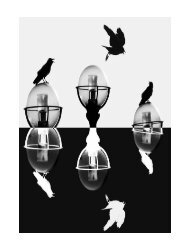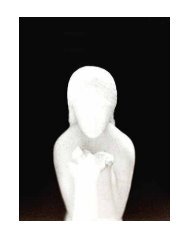Odds and Ends Essays, Blogs, Internet Discussions, Interviews and Miscellany
Collected essays, blogs, internet discussions, interviews and miscellany, from 2005 - 2020
Collected essays, blogs, internet discussions, interviews and miscellany, from 2005 - 2020
Create successful ePaper yourself
Turn your PDF publications into a flip-book with our unique Google optimized e-Paper software.
Side are guilty of here, Side maybe more so. Poetry is always potentially anything anyone can claim it is, and more.
Always more.
Notes
[1] I’ve never been able to accept the simile ‘snug as a gun’-it works on a “musical” level, maybe, but is ugly in
every other way.
[2] Heaney’s more unilateral return to his usual stomping grounds in Electric Light and District and Circle has-for
me, at least-made for far duller and more predictable poetry.
[3] Indeed, it could be argued that Prynne’s “aura” has been accrued to some degree to the detriment of deserving
contemporaries such as R. F. Langley, Peter Riley, Douglas Oliver and Wendy Mulford, whose reputations are
altogether too small on this side of the Atlantic especially.
Jeffrey Side’s Response
April 2009
The following are my responses to some points Rob Stanton made in his critique of my article The Dissembling Poet:
Seamus Heaney and the Avant-Garde.
Rob Stanton’s Critique:
It is presumptuous to imply, even indirectly, that Seamus Heaney is the closest thing the current British poetry scene
possesses to a genuinely popular artist just because the poetry-buying public is made up of ignorant fools who don’t
know what is good for them. Assuming, then, that there are other reasons, what is it that this audience “gets” from
Heaney’s work?
This was not said nor implied by me in my article.
Jeffrey Side’s Response:
Rob Stanton’s Critique:
Side presents Heaney as a poet of familiarity and stability, whose “dissembling” relates mainly to his jockeying and
uneasy self-positioning in the cloistered and inaccessible corridors of academic discourse. Whatever his failings as an
artist may be, that simply isn’t the Seamus Heaney I read.
Jeffrey Side’s Response:
This isn’t what I said, nor implied in my article relating to the word “dissembling”, which was used in relation to
Heaney’s attempts to reposition (in his book The Redress of Poetry) his poetic aesthetic and practice (which Stanton
correctly describes, when he says in his critique of my article: ‘Heaney’s poetry does indeed abound in [. . .] the
reinforcement of an essentially conservative worldview, little epiphanic confirmations of fixed national, social,
familial and personal identity bringing us back to “hard realities”‘) to appear less linguistically conservative and
descriptive than they actually are.
Rob Stanton’s Critique:
Here I differ from Side, who sees Heaney’s prose as a clear index of his poetic intentions. Instead, I would argue that
Heaney’s prose is essentially cheerleading on poetry’s behalf, trying to convince not only audience but also poet of
its ongoing intrinsic value and relevance.
Jeffrey Side’s Response:
156




